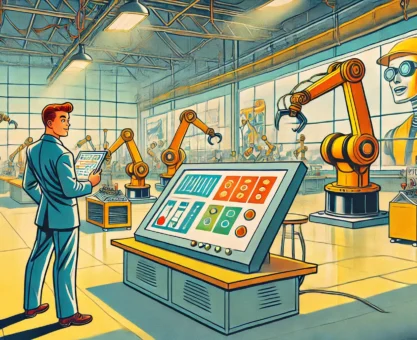Mark Francis is the UK Director of support services for Shred-it UK. Based in Manchester, he supports over 17,000 customers on a daily basis across Shred-it’s Shared Service Centre (SSC). Here Mark discusses how he has recently worked with Trimble Field Service to foster complete visibility of its field services to drive customer service excellence and what other field service businesses can do to achieve the same result.
What do you think the top business priorities/key challenges are for service based organisations today?
At Shred-it we recognise that customer expectations have shifted and companies, more than ever, are having to consistently demonstrate great service and value for money. Delivering excellent customer service is ultimately a major factor in us retaining customers and being actively recommended by customers – it is all about our brand and living the brand promise across all levels of the organisation is a major business priority.
What challenges prompted Shred-it to look into transforming the way it runs its field service operation?
For Shred-it, customer satisfaction and customer retention go hand in hand and we require our employees to “go that extra mile” in delivering the best possible customer service. Having complete visibility of our workforce and being able to deliver service excellence through the effective management of all aspects of our field service was essential and we recognised that this was something that could be improved through changing the way we ran our field operations.
What role do you think technology has in helping to improve the way a business delivers its service to customers?
Looking to technology to improve our service to customers was a natural step for Shred-it. For us the technology has helped in the overall management of what is happening across our fleet and having this insight all helps to contribute to what is needed to service each customer accurately, on time and in a cost effective way. From having little visibility of our fleet , Shred-it is now able to accurately report on and manage all aspects of field operations down to individual drivers, which has helped increase productivity levels and, ultimately, improved customer service and satisfaction.
Since gaining greater visibility of your workforce, what benefits have you experienced? (If you do not have the data to answer this, what benefits do you expect?)
Since using fleet management technology, real-time visibility into the location of a vehicle on the road has helped Shred-it to make more informed decisions in the planning and allocation of work across the workforce.
Additionally, we are able to run daily audits on vehicles to compare driver logs which have essentially provided a ‘productivity check’ for individual drivers. We have been able to pick up on any vehicles across the fleet that are being under-utilised and what vehicles aren’t being used at all and this has helped to increase efficiencies, leading to an 8 per cent growth in the business, achieved without introducing any additional vehicles to the fleet.
Since deploying driver safety technology, we can monitor and report against any individual driving behaviour and offer recommendations on training for poorly performing drivers, resulting in fewer accidents and helping to manage risk. We ensure our drivers are made frequently aware of their driver behaviour so that they are well informed to make the necessary changes that will help to improve safety and efficiency levels. Essentially, unless drivers have the facts, awareness and encouragement to change, technology only becomes a part of the solution to improving health and safety.
What has been the impact on customer service?
Real-time insight into what is happening across our workforce and what is being achieved has led directly to increased customer satisfaction due to such outcomes as increased on-time service delivery performance. As a result, our flexibility to service additional customer requests quickly and efficiently has increased. Knowing where our vehicles are at all times has also made us better informed to react to customer needs, such as scheduling an emergency visit or notifying a customer if a worker is running late or is going to miss an appointment.
How did you build the business case for technology investment?
We reviewed the upfront and on-going costs to the business in deploying the technology against the tangible savings and security/tracking levels that our customers expect. The long term investment would boost our productivity whilst reducing costs, ensuring a genuine Return on Investment whilst meeting and exceeding customer expectations.
How did you engage your workforce in the technology roll-out? Eg: did you put on any training for them?
We organised a number of road show sessions and workshops in order to educate the workforce on the new technology. This also gave the teams an opportunity to ask questions and understand the overall value attributed to the change.
Any final words of advice for people wanting to transform their field service?
Technology can be a great enabler to improve customer service levels but the tangible and lasting benefits come from employee engagement, commitment and passion to make it work day-to-day.



















